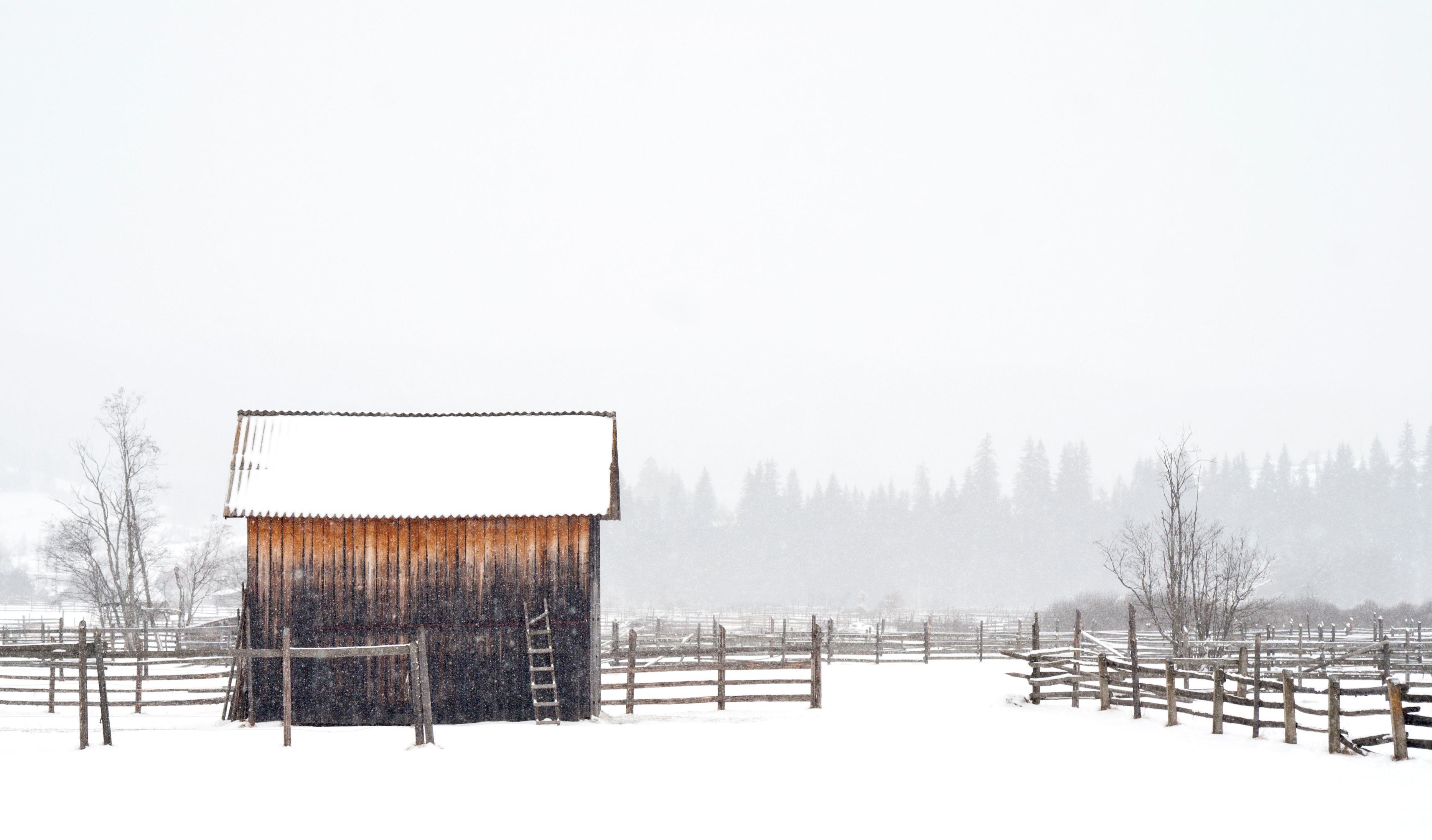
We’re officially two weeks deep into the winter season.
While this time of year generally tempts us to relax next to a cozy fire with a good book, if you live on a homestead, you know there’s additional work involved in making sure your place is prepared for the cold.
Even if you live in a “warmer” southern climate like we do, there are still those occasional cold snaps that can wreak havoc on your homestead if you haven’t prepared for them.
We recommend taking time in the next few days to make sure you’ve checked off all these 9 winter tips for your homestead.
1. Drain water from rain barrels.
One way to maximize resources is to collect water through a rain barrel. You can then use this to give your garden a good drink of water.
However, in the winter, it’s best to monitor these and drain water from your rain barrels. If you don’t, the water can freeze and break the barrels.
This is a lesson learned the hard way for us—one year, the frozen water caused our rain barrels to break, and they weren’t even full!
2. Cover your outside faucets to prevent freezing.
A busted pipe from frozen temps is the last thing we want in the new year.
One way to prevent your outdoor spigots from freezing is to install a faucet cover, especially if you live in a climate prone to harsh winter conditions. You can find inexpensive faucet covers and freeze caps at your local hardware store.
And of course, take care of your pipes indoors during especially freezing dips in the thermometer:
- Keep your faucets lightly dripping (conservation tip: keep a bucket below your dripping pipes to collect water and use for other purposes, like watering plants)
- Open cabinets where sink pipes are located
- Keep the temperature inside your home above 55 degrees
3. Drain and store your water hoses.
Speaking of spigots, disconnect your water hoses outside to avoid water freezing inside them. Make sure they are dry, then store them in a warm place to keep any lingering water droplets inside the hoses from freezing.
4. Cover your freeze-prone plants.
Help your outdoor plants make it through a hard winter.
Move potted plants inside or onto a covered patio at night if you have one.
Otherwise, before a big frost or cold snap, cover freeze-prone plants that are planted directly in the soil. When covering your plants, do so before nightfall so that you can capture the warmth from the day. You can use bedsheets, plastic milk jugs, upside down plant pots, or towels to cover your frost-averse plants. You can use wooden stakes to keep the cover slightly raised from the plants. Remove the covers in the morning.
At Stoney Creek Farm, we cover our rosemary (even the ARP variety).
If you have large plots of crop, you can use row cover, a material that keeps cold away while ensuring warmth surrounds the plants.
5. Protect your garden soil.
If you haven’t planted a cover crop, spread manure or fine mulch over your garden soil. It will disintegrate into the soil through the water, adding rich nutrients for spring planting.
6. Trim your bushes and trees.
Winter is an ideal time to trim back your bushes and trees as the sap is down. Take it from us, weeding out dead blackberry canes is also a LOT easier to do in the winter. This guide from UT Ag Extension is an excellent resource for trimming your blackberries or raspberries (termed “caneberries”).
Have an herb garden? Now is a great time to trim back your overgrown herbs, like mint and oregano.
Three extra tips for our livestock-owning friends:
7. Rotate your animals.
Keeping your animals too long in one pasture during the wet and cold months of winter can pave the way for muddy spots. Not only does this keep your animals cold and wet, it will also lead to weedy patches come spring. Rotate your animals to different grassy areas throughout winter to prevent this from happening.
8. Keep livestock water from freezing.
Your livestock will need plenty of water in the winter, and it’s important to keep this from freezing. There are several innovative ways you can creatively and proactively keep your livestock water from freezing, like using small pumps to create movement in the water, insulated bucket holders, or even large plastic balls that cover the surface of the water tank and decrease the surface area of water that is exposed to the freezing temps.
9. Give your livestock shelter.
Wet and cold conditions are a killer combination for animals. Make sure your livestock has adequate shelter this winter, like a small barn, mobile shelter, or makeshift shelter. You can find some creative livestock shelter ideas on Pinterest!
***
Happy new year and happy winter from your friends at Stoney Creek Farm!
Have you set sustainable goals for the new year? You can get some ideas in our most recent post: 6 New Year’s Resolutions for Living Sustainably in 2020

